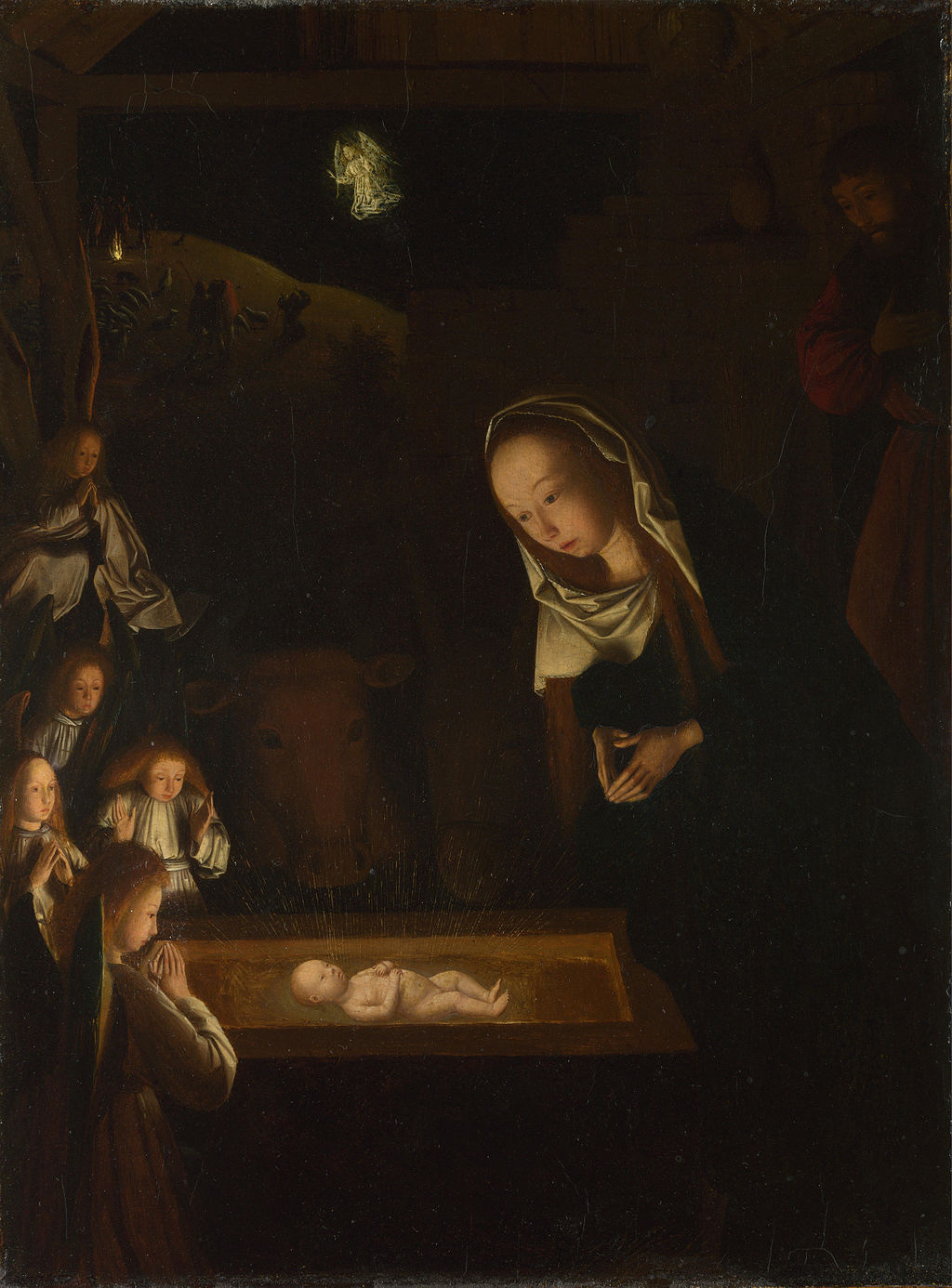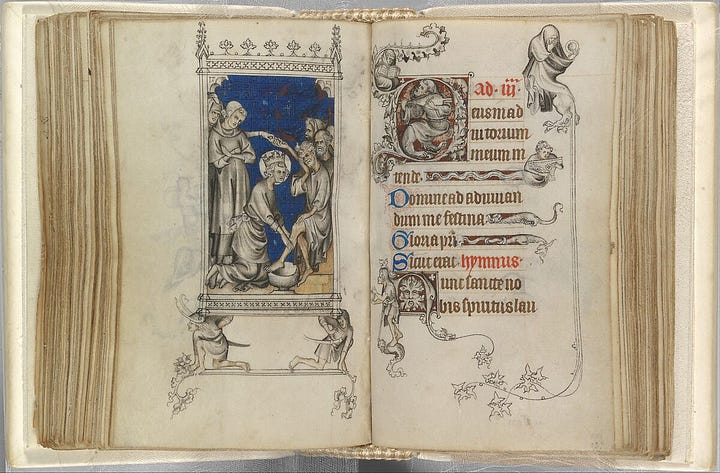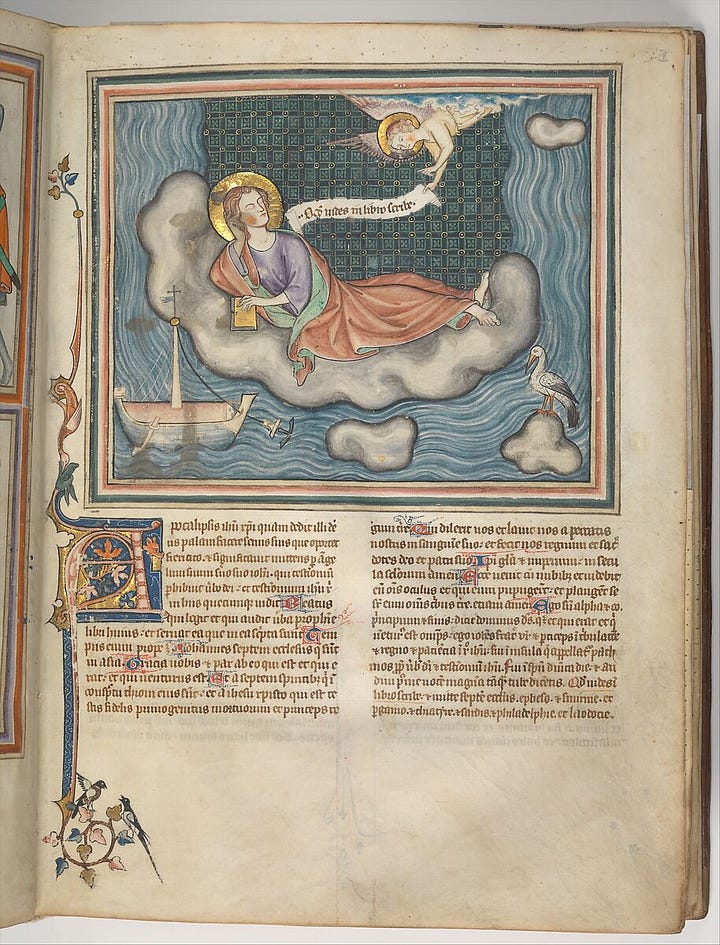P.S.A. (PublicATION Service Announcement): My poem “The Year Fellowship Comes Out” is out now in the Rising Phoenix Review. Read it here!

Dear Reader,
A month or two ago, I read Derek Jarman’s Chroma and got stuck on this sentence:
“The shyest of brown paintings is a small Madonna, no bigger than this book, which is framed in tortoiseshell in a quiet corner of the National Gallery.”1
Here Jarman pulls the literary equivalent of breaking the fourth wall. He compares the size of Nativity at Night to the size of Chroma itself. Which is all well and good if You-the-Reader happen to be reading a physical copy of the book. But what if Chroma finds its way to you as an e-book? What if you read it on your kindle, your iPad, or even your phone?
I have nothing against e-readers—the function that allows you to tap on a word and view its definition is particularly useful—but my heart belongs to ink on paper. My personal library is well-traveled, having crossed state lines, hibernated in storage units, and accompanied me to five different dorm rooms and apartments. I love the smell of them when they’re new and the way their spines crack when they’re old. I love the my pristine collector’s editions and my big, battered paperbacks. An argument could be made about the negative environmental impact of printing, but I remain doubtful that mass producing an electronic device is much better. To me, books are the halfway point between objects and people. A digital version just isn’t the same.
Jarman’s allusion to Chroma as an object with size and dimension belongs to a brief window of time in which the hardcover/paperback book was the primary vessel for the written story. The book is actually (if you’ll pardon the pun) a relatively novel invention. Before that, people had scrolls and tablets, and before that, there was no writing at all. Arguably, the audiobook is the closest thing we have to the way humans originally shared stories. (Leah Price has a great book on the history of the written word that goes into this trajectory in more detail.) All this to say, I don’t consider the hard copy to be the purest story form by any means. But I do think something gets lost in the e-book, particularly in a political climate full of book bans and censorship.




When you buy a hard copy of a book, you own that copy. It is yours to do with as you see fit. You can lend it to a friend, resell it, etc. E-books are more complicated. Technically, you never actually own a digital copy of a book—rather, you own a license to access said book. And licenses can be revoked.2 That possibility feels dangerous with so many people pushing for books bans in school under the guise of protecting children. (Happy Pride Month, by the way. Read some queer literature.) Personally, I’d rather keep my reading off the cloud. Hard copies are nigh untraceable. They can be hidden, passed around, paid for in cash, written in anonymously, etc. That freedom is increasingly valuable and increasingly rare.
Mostly, I hoard books for silly reasons: because they contain memories, because they have pretty covers, because they make any room look like home. I am not immune to the flex that is logging into a Zoom meeting in front of an absolutely stocked set of shelves. But I think there’s an element of resistance to the hard copy, too—a refusal to let our stories be controlled.
What are your thoughts on the e-book vs hard copy debate?
Thanks for reading.
Yours,
Jane
Derek Jarman, Chroma: A Book of Color (Minneapolis, MN: University of Minnesota Press, 2010), 86. Emphasis mine.
See the Kindle Store Terms of Use: “Kindle Content is licensed, not sold, to you by the Content Provider.”




